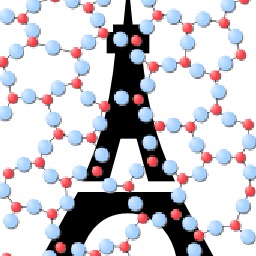Sub-critical crack growth in silicate glasses: Role of network topology
The presence of water in the surrounding atmosphere can cause sub-critical crack growth (SCCG) in glasses, a phenomenon known as fatigue or stress corrosion. Here, to facilitate the compositional design of more fatigue-resistant glasses, we investigate the composition dependence of SCCG by studying fourteen silicate glasses. The fatigue curves (V-KI) have been obtained by indentation experiments through measurements of the crack length as a function of post-indentation fatigue duration. Interestingly, we find that the fatigue resistance parameter N is generally improved by increasing the alumina content and is thereby found to exhibit a fairly linear dependence on the measured Vickers hardness HV for a wide range of N and HV values. This finding highlights the important role of network topology in governing the SCCG in silicate glasses, since hardness has been shown to scale linearly with the number of atomic constraints. Our results therefore suggest that glasses showing under-constrained flexible networks, which feature floppy internal modes of deformation, are more readily attacked by water molecules, thus promoting stress corrosion and reducing the fatigue resistance.
